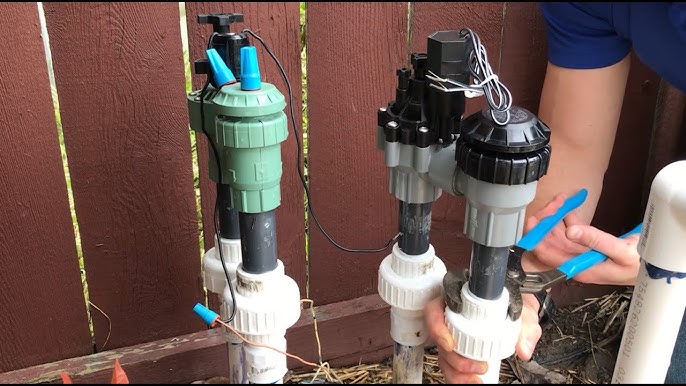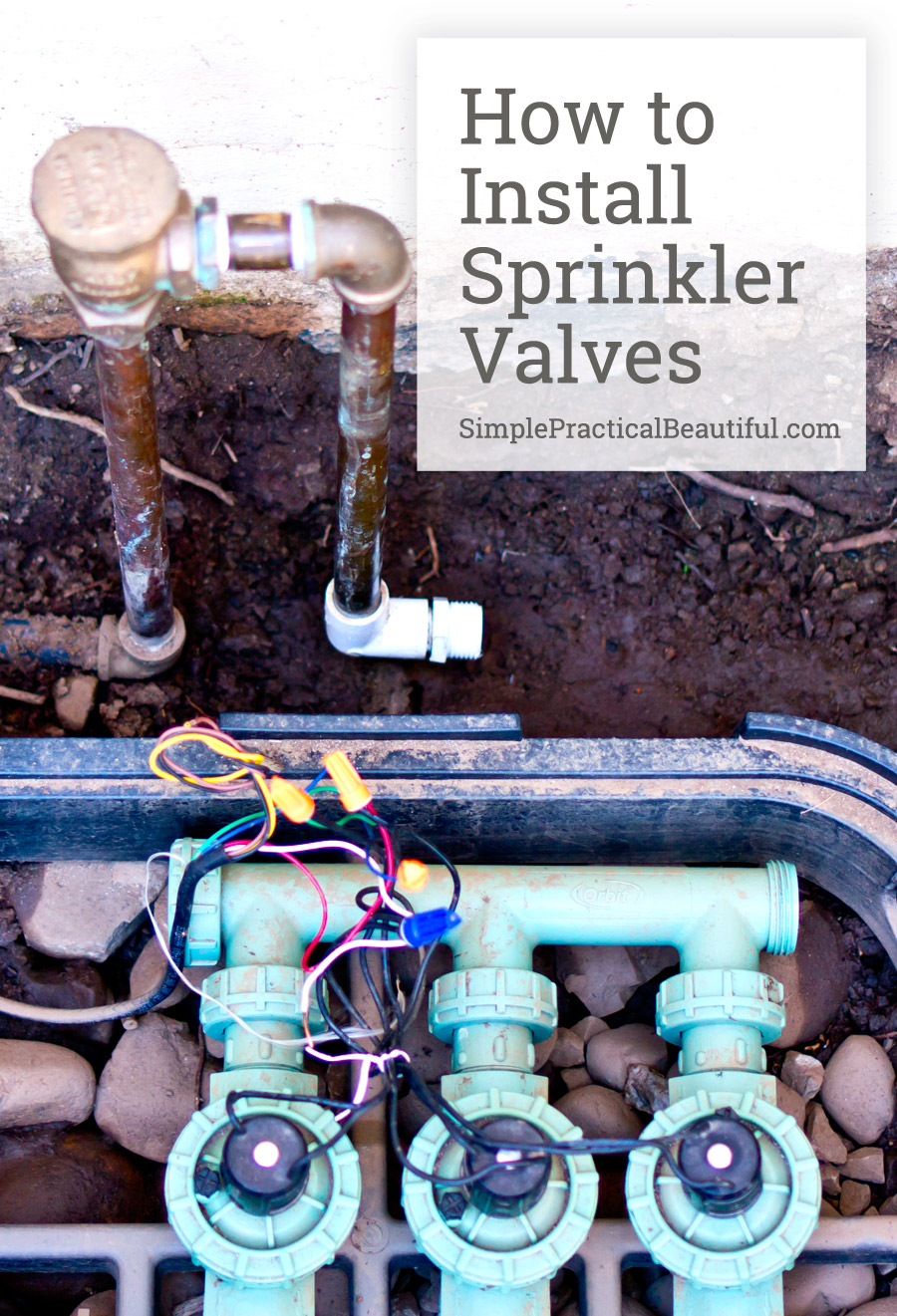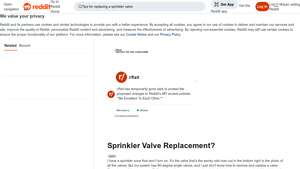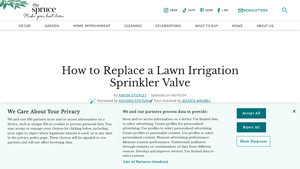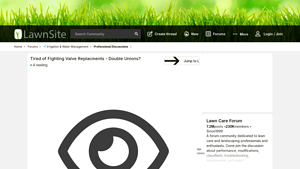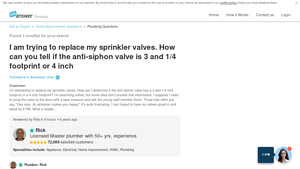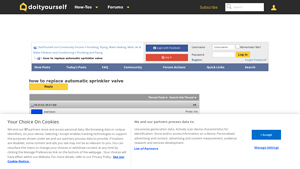Introduction: Navigating the Global Market for replacing irrigation valves
In today’s rapidly evolving agricultural landscape, sourcing reliable irrigation valves is a critical challenge for B2B buyers across various global markets, particularly in regions like Africa, South America, the Middle East, and Europe, including countries such as Brazil and Nigeria. With fluctuating climates and increasing demand for efficient water management, the need to replace irrigation valves becomes paramount to ensure optimal irrigation system performance and crop yield. This guide serves as a comprehensive resource, addressing the complexities of sourcing and replacing irrigation valves, from identifying the right type for specific applications to understanding the nuances of supplier vetting and cost considerations.
Throughout this guide, international buyers will gain insights into the different types of irrigation valves available, their applications in diverse agricultural settings, and the critical factors to consider during the procurement process. Additionally, we will explore best practices for assessing supplier reliability and quality, ensuring that your purchasing decisions align with both operational needs and budget constraints. By empowering B2B buyers with actionable knowledge and resources, this guide aims to facilitate informed decisions that enhance irrigation efficiency and contribute to sustainable agricultural practices.
Understanding replacing irrigation valves Types and Variations
| Type Name | Key Distinguishing Features | Primary B2B Applications | Brief Pros & Cons for Buyers |
|---|---|---|---|
| Manual Control Valves | Operated by hand; simple design | Small-scale farms, residential gardens | Pros: Low cost, easy installation. Cons: Labor-intensive, less efficient for large systems. |
| Automatic Solenoid Valves | Electrically operated; can be programmed | Large agricultural fields, commercial landscapes | Pros: Time-saving, precise control. Cons: Higher initial cost, requires electrical setup. |
| Anti-Siphon Valves | Prevents backflow; usually elevated installation | Municipal systems, commercial irrigation | Pros: Protects water quality, compliant with regulations. Cons: More complex installation, higher maintenance. |
| Pressure Regulating Valves | Maintains consistent pressure throughout the system | Golf courses, parks, and large estates | Pros: Protects plants from overwatering, optimizes water use. Cons: Can be costly, requires precise calibration. |
| PVC vs. Metal Valves | Material composition affects durability and cost | Varies by region and application | Pros: PVC is lightweight and corrosion-resistant; metal is robust. Cons: PVC can crack in extreme conditions; metal can corrode. |
What Are the Key Characteristics of Manual Control Valves?
Manual control valves are straightforward devices that require physical operation to regulate water flow. They are particularly suitable for small-scale farms and residential gardens, where irrigation needs can be easily managed without automation. When purchasing, consider the labor required for operation and the potential for human error, as these valves demand consistent attention to ensure proper irrigation.
How Do Automatic Solenoid Valves Benefit Large Agricultural Applications?
Automatic solenoid valves are designed for efficiency, allowing for remote and programmable control of irrigation systems. This makes them ideal for large agricultural fields and commercial landscapes, where precise watering schedules can significantly impact crop yield. Buyers should assess the initial investment against long-term labor savings and the potential for enhanced system performance, as these valves often come with a higher upfront cost.
Why Are Anti-Siphon Valves Important for Water Quality?
Anti-siphon valves are crucial in preventing backflow and protecting water quality in irrigation systems, especially in municipal applications. Their installation typically requires adherence to specific height regulations, making them essential for compliance with local water safety standards. B2B buyers must evaluate the complexity of installation and ongoing maintenance needs, as these valves can be more intricate than standard options.
What Advantages Do Pressure Regulating Valves Offer to Large Estates?
Pressure regulating valves maintain a consistent pressure throughout the irrigation system, which is vital for ensuring that plants receive optimal water without the risk of overwatering. These valves are commonly used in environments like golf courses and parks, where precise water management is essential. Buyers should consider the calibration requirements and the initial costs, as these valves can be more expensive but offer significant water-saving benefits.
How Does the Choice Between PVC and Metal Valves Affect Long-Term Performance?
The choice between PVC and metal valves can significantly influence the durability and cost-effectiveness of an irrigation system. PVC valves are lightweight and resistant to corrosion, making them suitable for various applications, while metal valves offer robustness in high-pressure situations. B2B purchasers should weigh the environmental conditions of their specific application—PVC may crack under extreme temperatures, whereas metal can suffer from corrosion, impacting long-term performance and maintenance costs.
Key Industrial Applications of replacing irrigation valves
| Industry/Sector | Specific Application of replacing irrigation valves | Value/Benefit for the Business | Key Sourcing Considerations for this Application |
|---|---|---|---|
| Agriculture | Replacing valves in large-scale irrigation systems | Improved water efficiency and crop yield | Compatibility with existing systems, local regulations |
| Landscaping & Horticulture | Upgrading valves for commercial landscaping projects | Enhanced system reliability and reduced maintenance costs | Quality of materials, warranty options, supplier reliability |
| Golf Course Management | Replacing valves in irrigation systems for golf courses | Consistent turf health and aesthetic quality | Durability under varying climate conditions, installation support |
| Municipal Water Management | Updating aging irrigation infrastructure in public parks | Efficient water usage and reduced operational costs | Compliance with local water conservation standards, scalability |
| Greenhouse Operations | Installing advanced control valves for climate management | Optimized growth conditions and resource management | Precision in specifications, integration with automation systems |
How Does Replacing Irrigation Valves Benefit the Agriculture Sector?
In agriculture, replacing irrigation valves is crucial for ensuring optimal water distribution across fields. Old or malfunctioning valves can lead to uneven watering, resulting in poor crop yields and increased water wastage. By upgrading to modern, efficient valves, farmers can achieve better water management, ultimately enhancing crop health and productivity. International buyers should consider local regulations regarding irrigation systems, and ensure compatibility with existing infrastructure to maximize the investment.
What Are the Advantages of Replacing Valves in Landscaping and Horticulture?
For landscaping and horticulture businesses, replacing irrigation valves can significantly improve system reliability. Upgraded valves minimize leaks and malfunctions, which can lead to costly water loss and damage to plants. This reliability translates into lower maintenance costs and enhanced service quality for clients. Buyers in this sector should focus on the quality of materials used in valves and consider suppliers that offer robust warranties and support for installation.
Why Is Valve Replacement Essential for Golf Course Management?
Golf course management relies heavily on consistent irrigation to maintain turf health and visual appeal. Replacing old valves ensures that water is delivered evenly across the course, preventing dry patches and promoting lush greens. This consistency not only enhances the playing experience but also reduces water consumption, aligning with sustainability goals. Key considerations for buyers include the durability of valves under various weather conditions and the availability of installation support from suppliers.
How Does Replacing Irrigation Valves Improve Municipal Water Management?
Municipal water management systems often face challenges with aging infrastructure, leading to inefficiencies in water usage in public parks and recreational areas. Replacing irrigation valves can enhance the efficiency of these systems, ensuring that water is used judiciously and reducing operational costs. Municipal buyers should prioritize compliance with local water conservation standards and seek scalable solutions that can be adapted to different park sizes and layouts.
In What Ways Do Greenhouse Operations Benefit from Modern Irrigation Valves?
In greenhouse operations, precision in irrigation is vital for optimizing growth conditions. Replacing outdated valves with advanced control systems allows for better management of water and nutrients, directly impacting plant health and productivity. Buyers in this sector should ensure that new valves integrate seamlessly with existing automation systems, and that they meet specific requirements for precision and reliability to support their unique operational needs.
3 Common User Pain Points for ‘replacing irrigation valves’ & Their Solutions
Scenario 1: Difficulty Identifying the Right Replacement Valve
The Problem: One common pain point for B2B buyers, especially those managing large-scale agricultural or landscaping operations, is accurately identifying the correct replacement valve. With various valve types, sizes, and specifications available, selecting the wrong valve can lead to operational inefficiencies or system failures. This issue is exacerbated in regions where irrigation systems may have been installed by different contractors over the years, leading to a mix of equipment that can be challenging to decipher.
The Solution: To address this challenge, B2B buyers should invest in a detailed inventory management system that catalogs existing irrigation components, including valve specifications. When sourcing replacement valves, consider utilizing a reliable supplier that offers comprehensive technical support. Before making a purchase, take the time to photograph and document existing valves, including brand and model numbers. Engage with suppliers who can provide compatibility checks and recommendations based on your specific needs. Additionally, consider training your team on valve identification and compatibility to enhance their confidence and efficiency in making these decisions.
Scenario 2: Complications from Water Shut-off Issues
The Problem: Another significant challenge faced by B2B buyers is the difficulty in shutting off the water supply during valve replacement. In many cases, the main shut-off valve is either hard to locate or malfunctioning, causing unnecessary delays and potential water damage to the surrounding area. This is particularly critical in high-demand agricultural settings where water management is vital for crop health.
The Solution: To mitigate this issue, it is essential to develop a comprehensive water management plan that includes clearly labeled shut-off valves throughout the irrigation system. Conduct regular maintenance checks on these valves to ensure they function correctly. Consider installing additional shut-off valves at strategic points in your system to provide easier access in the event of a valve replacement. Educate your team on emergency shut-off procedures to ensure they are prepared to respond quickly to any issues that arise. Additionally, provide clear documentation for all team members outlining the location and operation of all shut-off valves to streamline the replacement process.
Scenario 3: Challenges with Leaking Connections Post-Installation
The Problem: After replacing irrigation valves, many B2B buyers encounter issues with leaking connections, which can lead to increased water waste and higher operational costs. These leaks often stem from improper sealing during installation, compounded by environmental factors such as temperature fluctuations and soil movement, especially in regions prone to extreme weather conditions.
The Solution: To effectively combat leaking connections, ensure that your installation process follows best practices for sealing and securing fittings. Utilize high-quality materials, such as Teflon tape for threaded connections and reliable PVC primer and glue for solvent-welded joints. Prior to installation, thoroughly clean and prepare all connection surfaces to ensure a strong bond. After installation, conduct a thorough pressure test of the system to identify any potential leaks before backfilling or covering the valve box. Implement a regular maintenance schedule to inspect connections and promptly address any leaks that may arise. Training your staff on proper installation techniques and regular maintenance practices can significantly reduce the likelihood of leaks and enhance the longevity of your irrigation system.
Strategic Material Selection Guide for replacing irrigation valves
What Are the Key Properties of Different Materials for Irrigation Valves?
When selecting materials for irrigation valves, it’s essential to consider their properties, performance, and suitability for specific applications. Here, we analyze four common materials used in the manufacturing of irrigation valves: PVC, brass, stainless steel, and polyethylene.
How Does PVC Perform in Irrigation Valve Applications?
PVC (Polyvinyl Chloride) is a widely used material in irrigation systems due to its excellent corrosion resistance and lightweight nature. It typically operates well under moderate temperature and pressure conditions, making it suitable for many irrigation applications. PVC valves are often rated for temperatures up to 140°F (60°C) and pressures up to 150 PSI.
Pros: PVC is cost-effective, lightweight, and easy to install, which reduces labor costs. It’s also resistant to chemicals and UV light, making it suitable for outdoor applications.
Cons: However, PVC can become brittle over time, especially in extreme temperatures, and may not perform well in high-pressure situations. Additionally, it is not suitable for applications involving hot water.
Impact on Application: PVC is compatible with most irrigation media, including water and fertilizers, but care must be taken to avoid exposure to extreme conditions.
Considerations for International Buyers: In regions like Africa and South America, where UV exposure is significant, ensure that the PVC used is UV stabilized. Compliance with local standards such as ASTM is crucial for quality assurance.
What Are the Benefits of Brass in Irrigation Valves?
Brass is a durable metal alloy that offers excellent strength and corrosion resistance, making it a preferred choice for higher-end irrigation systems. Brass valves can withstand higher pressures (up to 300 PSI) and temperatures (up to 200°F or 93°C) compared to PVC.
Pros: The durability and longevity of brass valves make them ideal for long-term use. They are also resistant to corrosion from water and chemicals, ensuring reliable operation.
Cons: On the downside, brass is more expensive than PVC and can be heavier, which may increase shipping costs. Additionally, it may require more complex manufacturing processes.
Impact on Application: Brass valves are suitable for various media, including potable water, but may not be ideal for acidic or alkaline solutions without proper coatings.
Considerations for International Buyers: Buyers in Europe and the Middle East should ensure that brass valves comply with relevant standards such as DIN and JIS, particularly for potable water applications.
How Does Stainless Steel Compare for Irrigation Valves?
Stainless steel is known for its exceptional corrosion resistance and strength, making it suitable for harsh environments. It can handle high temperatures (up to 500°F or 260°C) and pressures (up to 300 PSI), making it versatile for various applications.
Pros: The longevity and durability of stainless steel valves make them a reliable choice. They are also resistant to rust and corrosion, which is particularly beneficial in humid or saline environments.
Cons: The main drawback is the higher cost compared to PVC and brass, which may deter budget-conscious buyers. Additionally, stainless steel can be more challenging to work with due to its weight and the need for specialized tools.
Impact on Application: Stainless steel valves are compatible with a wide range of media, including aggressive chemicals, making them ideal for industrial applications.
Considerations for International Buyers: Compliance with international standards is vital, especially in Europe, where material quality is strictly regulated. Buyers should also consider the availability of local suppliers to minimize lead times.
What Role Does Polyethylene Play in Irrigation Valve Selection?
Polyethylene is a flexible, lightweight plastic that is often used in irrigation systems, particularly for drip irrigation. It is resistant to chemicals and UV light, making it suitable for outdoor applications.
Pros: Polyethylene valves are easy to install and transport due to their lightweight nature. They are also cost-effective and offer good resistance to corrosion.
Cons: However, polyethylene may not withstand high pressures or temperatures, limiting its use in certain applications. It can also become brittle over time when exposed to UV light without proper additives.
Impact on Application: Polyethylene valves are ideal for low-pressure systems and are commonly used in agricultural applications.
Considerations for International Buyers: In regions with high UV exposure, such as Africa, it is essential to select polyethylene that has been treated for UV resistance. Compliance with local standards can also ensure product quality.
Summary of Material Selection for Irrigation Valves
| Material | Typical Use Case for replacing irrigation valves | Key Advantage | Key Disadvantage/Limitation | Relative Cost (Low/Med/High) |
|---|---|---|---|---|
| PVC | General irrigation systems | Cost-effective and lightweight | Brittle in extreme conditions | Low |
| Brass | High-end irrigation systems | Durable and long-lasting | Higher cost and heavier | Med |
| Stainless Steel | Harsh environments and industrial applications | Exceptional corrosion resistance | Expensive and requires specialized tools | High |
| Polyethylene | Drip irrigation systems | Flexible and easy to install | Limited pressure/temperature tolerance | Low |
This strategic material selection guide provides valuable insights for international B2B buyers, helping them make informed decisions based on performance, cost, and regional considerations.
In-depth Look: Manufacturing Processes and Quality Assurance for replacing irrigation valves
What Are the Key Stages in the Manufacturing Process of Irrigation Valves?
The manufacturing process for irrigation valves involves several critical stages that ensure the final product meets performance and quality standards. Understanding these stages is vital for B2B buyers aiming to source reliable products.
1. Material Preparation: What Materials Are Used in Irrigation Valve Manufacturing?
The first stage involves selecting high-quality raw materials, typically including durable plastics like PVC or high-grade metals such as brass and stainless steel. These materials are chosen for their resistance to corrosion, pressure, and temperature fluctuations, which are essential in irrigation applications. The materials undergo rigorous testing for consistency and quality before being processed further.
2. Forming: How Are Irrigation Valves Shaped and Molded?
In the forming stage, raw materials are shaped into the desired valve components using techniques such as injection molding for plastics and machining or casting for metals. Injection molding allows for precise shapes and sizes, ensuring that the valves fit seamlessly into existing irrigation systems. Machining processes, on the other hand, enable the creation of intricate designs that enhance valve functionality.
3. Assembly: What Happens During the Assembly of Irrigation Valves?
Once the components are formed, they undergo assembly. This stage involves the careful joining of various parts, such as the valve body, diaphragm, and solenoid, ensuring that all components function harmoniously. Advanced automation and robotics are often employed to enhance precision during assembly, reducing human error and increasing production efficiency.
4. Finishing: How Is the Final Product Prepared for Market?
The finishing stage includes surface treatment processes such as coating, polishing, and painting to protect the valves from environmental factors. This step not only enhances the aesthetic appeal of the product but also adds a layer of durability, extending the lifespan of the valve. Quality checks are performed throughout this stage to ensure that the finished product meets specifications.
What Quality Control Standards Are Relevant for Irrigation Valve Manufacturing?
Quality assurance is crucial in the manufacturing of irrigation valves, especially for B2B buyers who require reliable performance in diverse environments.
International Standards: Which Certifications Should Buyers Look For?
Manufacturers often adhere to international quality standards such as ISO 9001, which outlines criteria for a quality management system. Compliance with these standards signifies that the manufacturer has implemented robust quality control processes to ensure consistent product quality. Other relevant certifications may include CE marking for products sold in Europe and API standards for valves used in the oil and gas industry.
Industry-Specific Quality Control Measures: What Are the Key Checkpoints?
Quality control in irrigation valve manufacturing typically includes several checkpoints:
Incoming Quality Control (IQC): This initial stage involves inspecting raw materials for compliance with specifications before production begins. Materials that do not meet quality standards are rejected.
In-Process Quality Control (IPQC): During manufacturing, various tests are conducted to ensure that each stage of production adheres to predefined quality parameters. This may include dimensional checks and performance testing of components.
Final Quality Control (FQC): After assembly, the completed valves undergo rigorous testing to ensure they function correctly under pressure and flow conditions. This can include hydraulic testing, leak testing, and operational checks.
How Can B2B Buyers Verify Supplier Quality Control Processes?
For international B2B buyers, especially those in Africa, South America, the Middle East, and Europe, verifying a supplier’s quality control processes is essential to ensure reliable sourcing.
Supplier Audits: What Should Buyers Look For?
Conducting supplier audits is one effective way to assess quality control measures. Buyers should inquire about the frequency of these audits, the criteria used, and any corrective actions taken in response to past issues. A thorough audit can reveal the manufacturer’s commitment to maintaining quality standards.
Quality Reports and Certifications: How Can They Be Used?
Requesting quality assurance reports and certifications from suppliers can provide insights into their manufacturing processes. These documents should outline the results of various quality tests and any certifications obtained. Buyers should verify that these certifications are current and relevant to their specific market needs.
Third-Party Inspections: Are They Necessary?
Engaging third-party inspection services can add an additional layer of assurance. These independent entities can evaluate the manufacturing processes and final products against international standards, providing unbiased reports on quality compliance.
What Are the Quality Control Nuances for International B2B Buyers?
Understanding the nuances of quality control in different regions can significantly impact sourcing decisions.
Regional Standards: How Do They Differ?
Different regions may have varying standards and regulations governing irrigation products. For example, European markets may require CE marking, while Middle Eastern countries might prioritize compliance with local standards. Buyers should familiarize themselves with these regional requirements to avoid compliance issues.
Cultural Considerations: What Should Buyers Be Aware Of?
Cultural differences can also influence manufacturing practices and quality assurance. Buyers should consider how local business practices may impact supplier reliability, communication, and responsiveness. Building strong relationships with suppliers can facilitate smoother transactions and enhance quality assurance.
Conclusion: How Can B2B Buyers Ensure They Are Sourcing Quality Irrigation Valves?
By understanding the manufacturing processes and quality control measures in place, B2B buyers can make informed decisions when sourcing irrigation valves. Establishing clear communication with suppliers, conducting thorough audits, and remaining aware of regional standards will enhance the reliability of their procurement strategies, ultimately leading to successful irrigation system operations.
Practical Sourcing Guide: A Step-by-Step Checklist for ‘replacing irrigation valves’
In the complex landscape of irrigation systems, selecting the right replacement valves is a critical task for ensuring operational efficiency and longevity. This checklist serves as a comprehensive guide for B2B buyers aiming to procure irrigation valves, with a focus on quality and compatibility.
Step 1: Assess Your Current System Requirements
Understanding your existing irrigation system is essential before sourcing replacement valves. Identify the specific types and sizes of valves currently in use, as well as any issues they may have presented. Consider factors such as flow rate, pressure requirements, and compatibility with existing piping materials to ensure the new valves will integrate seamlessly into your system.
Step 2: Define Your Technical Specifications
Clearly outline the technical specifications needed for the replacement valves. This includes the valve type (e.g., electric, manual, anti-siphon), material (PVC, brass, etc.), and size. Having precise specifications will facilitate better communication with suppliers and help avoid any costly mistakes during the procurement process.
Step 3: Research and Shortlist Suppliers
Conduct thorough research to identify potential suppliers who specialize in irrigation components. Look for companies with a strong track record in the industry and positive reviews from other businesses. Consider creating a shortlist based on factors such as product range, delivery times, and customer service responsiveness.
- Tip: Utilize industry-specific directories and attend trade shows to discover reputable suppliers.
Step 4: Request Samples and Product Information
Before making a bulk purchase, request samples of the irrigation valves you intend to buy. This allows you to assess the quality and suitability of the products firsthand. Along with samples, ask for detailed product specifications, installation guidelines, and warranty information to better understand the value offered.
Step 5: Verify Supplier Certifications and Compliance
Ensure that the suppliers you are considering comply with relevant industry standards and certifications. This is especially important for international transactions, where regulations may vary. Certifications can include ISO standards, local safety regulations, and environmental compliance, which are critical for maintaining operational standards.
Step 6: Evaluate Pricing and Payment Terms
Review the pricing structures provided by your shortlisted suppliers. Compare not just the base price of the valves but also consider shipping costs, bulk order discounts, and payment terms. Transparent pricing helps prevent unexpected expenses and allows for better budget management.
- Note: Be wary of prices that seem too good to be true, as they may indicate inferior quality.
Step 7: Establish a Communication Plan
Once you select a supplier, establish a clear communication plan for ongoing updates and feedback. This should include points of contact, timelines for delivery, and procedures for handling any potential issues. A robust communication plan fosters a strong supplier relationship and ensures a smoother procurement process.
By following this step-by-step checklist, B2B buyers can ensure they make informed decisions when sourcing replacement irrigation valves, ultimately enhancing the efficiency and reliability of their irrigation systems.
Comprehensive Cost and Pricing Analysis for replacing irrigation valves Sourcing
What Are the Key Cost Components for Replacing Irrigation Valves?
Replacing irrigation valves involves several cost components that buyers need to consider. Materials typically account for the largest portion of the cost, which includes the valve itself, PVC adapters, and sealants such as Teflon tape or PVC primer and glue. Basic sprinkler valves can range from $20 to $100, depending on the type and specifications. Labor costs should also be factored in, especially if hiring professionals; this can vary widely based on location and expertise, but expect to pay for 1-2 hours of service.
Manufacturing overhead includes costs related to production, such as utilities, facility maintenance, and labor associated with manufacturing the valves. Tooling costs may arise for custom or specialized valve designs, which are often necessary for unique irrigation systems. Quality Control (QC) expenses ensure that the valves meet safety and operational standards, which is crucial for maintaining system integrity. Logistics costs cover shipping and handling, which can be significant for international buyers due to the bulky nature of irrigation products. Lastly, margin reflects the profit that suppliers need to maintain their operations.
How Do Price Influencers Affect Irrigation Valve Costs?
Various factors influence the pricing of irrigation valves. Volume and Minimum Order Quantity (MOQ) significantly impact unit prices; larger orders typically yield discounts. Specifications and customization also play a role; specialized valves tailored to specific irrigation systems are often more expensive than standard models. The choice of materials affects both performance and cost, with higher-quality materials resulting in better longevity but at a premium price.
Quality certifications can also influence pricing. Valves that comply with international standards may incur higher costs due to additional testing and validation. Supplier factors, such as reputation, reliability, and geographic location, can further affect pricing. For example, sourcing from suppliers in regions with higher labor costs may lead to increased prices. Additionally, understanding the implications of Incoterms is essential for buyers, as these terms dictate shipping responsibilities and costs, impacting the total price.
What Negotiation Strategies Can Help Buyers Achieve Cost Efficiency?
When sourcing irrigation valves, buyers should adopt a strategic approach to negotiation to maximize cost efficiency. Start by gathering multiple quotes to understand the market landscape. Leverage Total Cost of Ownership (TCO) analysis, which considers not just the purchase price but also maintenance and operational costs over the valve’s lifespan. This perspective can justify higher upfront costs if the valve offers better durability and efficiency.
Buyers should also inquire about potential discounts for bulk purchases or long-term contracts. Establishing a strong relationship with suppliers can lead to preferential pricing and terms. Furthermore, consider engaging in collaborative sourcing, where multiple buyers join forces to increase their purchasing power, potentially leading to better pricing.
What Should International Buyers Consider Regarding Pricing Nuances?
For international B2B buyers, particularly from regions like Africa, South America, the Middle East, and Europe, understanding pricing nuances is crucial. Currency fluctuations can significantly affect costs, so it’s wise to lock in prices when favorable exchange rates are available. Additionally, consider local regulations that might impact pricing, such as import duties or taxes.
It’s essential to account for logistics in international sourcing, which includes shipping times and costs. Engage with suppliers who have experience in your region to avoid unexpected delays or fees. Lastly, ensure that suppliers are transparent about their pricing structures, including any hidden costs that may arise during the procurement process.
Disclaimer on Pricing Information
The prices mentioned in this analysis are indicative and may vary based on specific circumstances, including supplier agreements, market conditions, and location. It is advisable for buyers to conduct thorough research and obtain updated quotes to make informed purchasing decisions.
Alternatives Analysis: Comparing replacing irrigation valves With Other Solutions
Introduction: Exploring Alternatives to Replacing Irrigation Valves
In the realm of irrigation management, replacing faulty valves is a common solution for ensuring optimal water flow and system performance. However, several alternative methods and technologies can also address similar issues, potentially offering different benefits depending on the specific needs of an operation. This section compares the traditional method of replacing irrigation valves with alternative solutions, helping B2B buyers make informed decisions.
Comparison Table
| Comparison Aspect | Replacing Irrigation Valves | Smart Irrigation Controllers | Drip Irrigation Systems |
|---|---|---|---|
| Performance | Restores flow; immediate fix | Optimizes water use; reduces waste | Delivers water directly to roots; minimizes evaporation |
| Cost | Low ($20-$40 per valve) | Moderate to High ($150-$500+) | Moderate ($200-$1,500+) depending on scale |
| Ease of Implementation | Moderate (requires some skill) | Easy to Moderate (may need professional setup) | Moderate (installation can be labor-intensive) |
| Maintenance | Low (valves last 10-15 years) | Low to Moderate (requires software updates) | Moderate (regular checks needed for clogs) |
| Best Use Case | Quick repairs in established systems | Large-scale operations seeking efficiency | Areas with water scarcity or specific crop needs |
Detailed Breakdown of Alternatives
Smart Irrigation Controllers
Smart irrigation controllers utilize advanced technology to adjust watering schedules based on weather conditions, soil moisture levels, and plant needs. This solution is particularly beneficial for large agricultural operations or commercial landscapes where water efficiency is critical. While the initial investment can be higher, the long-term savings on water costs and reduced labor can outweigh these upfront expenses. However, they may require a more complex setup and ongoing monitoring to ensure optimal performance.
Drip Irrigation Systems
Drip irrigation systems deliver water directly to the root zone of plants through a network of tubing and emitters. This method is highly efficient, significantly reducing water waste and minimizing evaporation losses. Drip systems are ideal for arid regions or crops that require precise watering. Although installation can be labor-intensive and may involve higher initial costs, the long-term benefits in water conservation and crop yield can make it a worthwhile investment. Regular maintenance is necessary to prevent clogging and ensure system efficiency.
Conclusion: Making the Right Choice for Irrigation Solutions
When considering whether to replace irrigation valves or explore alternative solutions, B2B buyers should evaluate their specific operational needs, budget constraints, and long-term goals. If immediate repairs are required for existing systems, replacing valves remains a cost-effective option. However, for those looking to enhance water efficiency and sustainability, investing in smart controllers or drip irrigation systems may yield significant benefits over time. Ultimately, the right choice will depend on the unique circumstances of each buyer’s agricultural or landscaping operations.
Essential Technical Properties and Trade Terminology for replacing irrigation valves
What Are the Key Technical Properties for Replacing Irrigation Valves?
When selecting irrigation valves, understanding the technical specifications is crucial for ensuring compatibility and performance. Below are some essential properties that B2B buyers should consider:
Material Grade
The material grade of an irrigation valve, typically brass, PVC, or high-density polyethylene (HDPE), directly affects durability and resistance to corrosion. For instance, brass valves are preferred in high-pressure environments due to their strength, while PVC is lightweight and resistant to chemicals but may not withstand extreme temperatures. Choosing the right material can reduce maintenance costs and extend the lifespan of the irrigation system.Pressure Rating
Pressure rating, usually measured in pounds per square inch (psi), indicates the maximum pressure the valve can handle. Selecting a valve with an adequate pressure rating is vital for preventing leaks or failures under operational conditions. In regions with varying water pressure, understanding this specification can help ensure that the irrigation system operates efficiently without causing damage.Flow Rate
Flow rate, expressed in gallons per minute (GPM), determines how much water can pass through the valve. This property is essential for ensuring that the irrigation system delivers adequate water to each zone. Selecting a valve with the appropriate flow rate helps optimize water usage, which is particularly important in water-scarce regions.Connection Type
The connection type—whether threaded, slip, or flanged—affects how the valve integrates with existing piping. Understanding the connection type ensures that buyers procure compatible components, reducing the risk of leaks and installation issues. In B2B transactions, clear communication about connection types can streamline the procurement process and minimize delays.Size and Tolerance
Size specifications, often given in inches, denote the diameter of the valve, while tolerance refers to the allowable variation in size. Accurate sizing is crucial for ensuring a proper fit within the irrigation system. Mismatched sizes can lead to significant water loss and inefficiencies, making it imperative for buyers to verify these specifications before purchase.
What Common Trade Terms Should B2B Buyers Know When Replacing Irrigation Valves?
Familiarity with industry jargon can facilitate smoother transactions and negotiations. Here are several key terms relevant to irrigation valve procurement:
OEM (Original Equipment Manufacturer)
An OEM produces components or products that are sold under another company’s brand. In the context of irrigation valves, sourcing from reputable OEMs ensures that buyers receive high-quality products that meet industry standards, which is critical for maintaining system integrity.MOQ (Minimum Order Quantity)
MOQ refers to the minimum number of units a supplier is willing to sell. Understanding MOQ is essential for budget planning and inventory management. For businesses looking to replace multiple valves, knowing the MOQ can help in negotiating better terms or in assessing the feasibility of bulk purchases.RFQ (Request for Quotation)
An RFQ is a formal document requesting pricing and terms from suppliers. For B2B buyers, issuing an RFQ can help compare costs and services, ensuring they make informed purchasing decisions. A well-structured RFQ also enhances transparency and fosters competitive pricing among suppliers.Incoterms (International Commercial Terms)
Incoterms are standardized trade terms that define the responsibilities of buyers and sellers in international transactions. Familiarity with these terms helps B2B buyers understand shipping costs, risk allocation, and delivery responsibilities, which is particularly important when sourcing irrigation valves from different regions.Lead Time
Lead time refers to the period between placing an order and receiving the product. Knowing the lead time for irrigation valves is vital for project planning and can significantly impact the overall timeline of irrigation system installation or replacement.
Understanding these technical properties and trade terms can empower B2B buyers to make informed decisions when replacing irrigation valves, ultimately leading to more efficient and cost-effective irrigation solutions.
Navigating Market Dynamics and Sourcing Trends in the replacing irrigation valves Sector
What Are the Key Market Dynamics and Trends Influencing the Replacing Irrigation Valves Sector?
The global irrigation valves market is experiencing significant growth driven by increasing agricultural productivity demands, coupled with the need for efficient water management systems. As nations grapple with water scarcity issues, particularly in regions like Africa and the Middle East, the emphasis on advanced irrigation systems is paramount. In South America and Europe, the push for sustainable agriculture further propels the market, aligning with global initiatives to enhance food security.
Emerging technologies, such as smart irrigation systems that leverage IoT (Internet of Things) for monitoring and automation, are transforming the way irrigation valves are sourced and utilized. These systems not only optimize water usage but also reduce operational costs. B2B buyers should keep an eye on suppliers who offer integrated solutions that combine traditional valve systems with smart technology. Furthermore, the rise of e-commerce platforms is making it easier for international buyers to access a broader range of products and suppliers, enhancing competition and driving down costs.
Another trend is the increasing importance of local sourcing, particularly in developing markets. Buyers in regions like Brazil and Nigeria are increasingly favoring suppliers who can provide quicker delivery times and localized support. This shift not only reduces lead times but also fosters relationships with local manufacturers, enhancing supply chain resilience.
How Can Sustainability and Ethical Sourcing Impact the Replacing Irrigation Valves Market?
Sustainability is becoming a cornerstone of procurement strategies in the irrigation valves sector. The environmental impact of valve production and the resources consumed during their lifecycle is prompting buyers to seek out eco-friendly alternatives. This includes valves made from recycled materials or those that utilize sustainable manufacturing processes.
Ethical sourcing is equally crucial, as buyers are increasingly aware of the implications of their purchasing decisions on local communities and ecosystems. Establishing transparent supply chains that adhere to ethical labor practices is essential for building brand reputation and consumer trust. Buyers should prioritize suppliers who hold certifications such as ISO 14001 for environmental management and Fair Trade for ethical labor practices.
Moreover, the demand for “green” certifications is on the rise. Valves that are certified for reduced environmental impact not only appeal to environmentally conscious buyers but may also qualify for government incentives in various regions. Therefore, understanding the certification landscape can provide B2B buyers with a competitive edge, ensuring compliance and enhancing their corporate social responsibility profile.
How Has the Replacing Irrigation Valves Sector Evolved Over Time?
The replacing irrigation valves sector has evolved significantly over the past few decades, transitioning from simple mechanical devices to sophisticated components integral to modern irrigation systems. Initially, irrigation valves were primarily made of metal, which was prone to corrosion and required frequent maintenance.
With the advent of advanced materials like PVC and composites, today’s valves offer enhanced durability and reduced maintenance costs. The integration of automation and smart technology has further revolutionized the sector, allowing for remote monitoring and control, which improves efficiency and water conservation. This evolution reflects the broader trends in agriculture and environmental stewardship, positioning the irrigation valves market as a key player in sustainable farming practices.
As the sector continues to innovate, B2B buyers must stay informed about advancements in valve technology and materials to make informed purchasing decisions that align with both operational needs and sustainability goals.
Frequently Asked Questions (FAQs) for B2B Buyers of replacing irrigation valves
How do I solve leaks in my irrigation system?
Leaks in an irrigation system can often be traced back to faulty valves. Start by identifying the source of the leak—this may involve inspecting the valves, joints, and connections for signs of wear or damage. Once located, you can either replace the valve or use appropriate sealants and fittings to repair it. For extensive leaks or multiple valve issues, consider consulting with a professional irrigation specialist to ensure a comprehensive solution and avoid future problems.What is the best type of irrigation valve for arid climates?
For arid climates, anti-siphon valves are highly recommended as they prevent backflow and protect the irrigation system from contamination. Additionally, selecting valves made from durable materials, such as PVC or brass, ensures longevity against harsh environmental conditions. It’s also wise to consider valves with pressure regulation features, which help manage water usage efficiently, ultimately conserving water resources in dry regions.How can I vet suppliers for irrigation valves in international markets?
Vetting suppliers requires thorough research and due diligence. Start by checking their business credentials, including registration and certifications. Request references and case studies from previous clients, especially those in your region. Additionally, assess their manufacturing capabilities, quality control processes, and compliance with international standards. Participating in trade shows and industry forums can also provide insights into reputable suppliers and foster direct communication.What are the typical minimum order quantities (MOQ) for irrigation valves?
Minimum order quantities for irrigation valves can vary significantly between suppliers. Generally, MOQs can range from 50 to several hundred units, depending on the manufacturer and the specific type of valve. It’s essential to discuss your needs directly with potential suppliers, as some may offer flexibility for smaller orders, especially for first-time buyers or sample requests. Understanding MOQs will help you manage inventory and cash flow effectively.What payment terms should I expect when sourcing irrigation valves internationally?
Payment terms can vary by supplier and region, but common practices include net 30, net 60, or payment in advance. For international transactions, consider using secure payment methods such as letters of credit or escrow services to protect your investment. It’s advisable to negotiate terms upfront, ensuring that both parties understand the payment schedule and any penalties for late payments. This transparency can help build a trustworthy relationship with your supplier.How do I ensure quality assurance (QA) for irrigation valves sourced internationally?
To ensure quality assurance, request detailed product specifications and compliance certificates from suppliers. Implement a quality control plan that includes inspections at various stages, such as pre-production, during manufacturing, and before shipment. If possible, consider hiring third-party inspection services to evaluate the products in the supplier’s facility. Establishing clear communication channels and expectations can also help mitigate quality issues before they arise.What logistics considerations should I keep in mind for importing irrigation valves?
Logistics play a crucial role in the timely delivery of irrigation valves. Consider factors such as shipping methods (air vs. sea), customs clearance procedures, and potential tariffs or duties applicable to your region. Collaborating with experienced freight forwarders can streamline the import process and help navigate any regulatory complexities. Additionally, plan for potential delays in transit and ensure that you have adequate warehousing options upon arrival.How can customization of irrigation valves benefit my business?
Customization allows you to tailor irrigation valves to meet specific operational needs and regional requirements. This can include adjustments in size, material, and functionality, ensuring compatibility with existing systems. Custom solutions can enhance efficiency and reduce maintenance costs over time. Moreover, offering customized products can provide a competitive edge in your market, as it demonstrates a commitment to meeting unique customer demands and improving overall satisfaction.
Important Disclaimer & Terms of Use
⚠️ Important Disclaimer
The information provided in this guide, including content regarding manufacturers, technical specifications, and market analysis, is for informational and educational purposes only. It does not constitute professional procurement advice, financial advice, or legal advice.
While we have made every effort to ensure the accuracy and timeliness of the information, we are not responsible for any errors, omissions, or outdated information. Market conditions, company details, and technical standards are subject to change.
B2B buyers must conduct their own independent and thorough due diligence before making any purchasing decisions. This includes contacting suppliers directly, verifying certifications, requesting samples, and seeking professional consultation. The risk of relying on any information in this guide is borne solely by the reader.
Top 7 Replacing Irrigation Valves Manufacturers & Suppliers List
1. Apollo – Slide Repair Coupler
2. The Spruce – Sprinkler Valve Replacement Guide
Domain: thespruce.com
Registered: 2009 (16 years)
Introduction: Working Time: 1 hr, 30 mins; Total Time: 1 – 2 hrs; Skill Level: Intermediate; Estimated Cost: $20 to $40; Yield: Replace one sprinkler valve; Symptoms of faulty valve: leaks, poor water flow, heads that don’t work; Equipment/Tools needed: reciprocating saw, PVC pipe cutter or hacksaw, utility knife or sandpaper, tongue-and-groove pliers; Materials needed: new sprinkler valve, PVC MIP adapters (2 …
3. Rain Bird – 100DVFSS Valve
Domain: instructables.com
Registered: 2005 (20 years)
Introduction: Valves: Rain Bird 100DVFSS – 1 in. Slip x Slip ‘Street’ elbows (one end is male, other end is female); Supplies: Solvent glue, Hacksaw (preferably with an extending blade), Irrigation wire nuts (or house wiring nuts with hot melt glue), Optional: 1in to 3/4in reducing bushings if you have 1in supply and 3/4 sprinkler lines.
4. Brass Superior – 800 Sprinkler Valves
Domain: lawnsite.com
Registered: 2000 (25 years)
Introduction: Brass Superior 800 sprinkler valves with back-flow preventer housings, one built-in brass union, one female threaded inlet; PVC unions for both inlet and outlet; concerns about brass union threads seizing and cross-threading on plastic pipe; preference for using PVC unions to avoid these issues.
5. JustAnswer – Anti-Siphon Valves
Domain: justanswer.com
Registered: 2004 (21 years)
Introduction: Anti-siphon valves with varying footprint sizes (3¼-inch or 4-inch) for sprinkler systems. Importance of measuring the valve’s base diameter for compatibility with existing piping and mounting. Recommendations to use a tape measure across the widest part of the valve base. Emphasis on confirming valve type matches irrigation system’s pressure and flow requirements. Caution against forcing fittings…
6. Rainbird – DVF Valves and Alternatives
Domain: thelawnforum.com
Registered: 2017 (8 years)
Introduction: Valves: Rainbird DVF; Alternative Valves: Orbit valves with unions for easy removal; Union adapters: Inquiry about availability; Installation method: Suggestion to use slip-thread fittings for cost-effectiveness; Maintenance tip: Replace only the top part of the valve instead of cutting; Additional components: 100-mesh screen for MP Rotators, male slip-thread with brass ball valve for blow-out and…
7. Do It Yourself – PVC Rainbird Valve Kit
Domain: doityourself.com
Registered: 1995 (30 years)
Introduction: PVC Rainbird valve, anti-syphon valve, 3/4″ or 1″ PVC pipe, PVC saw (wire-saw or click-on saw), PVC cement, purple primer, threaded adaptor fittings (x2), Teflon tape, crescent wrench.
Strategic Sourcing Conclusion and Outlook for replacing irrigation valves
In the competitive landscape of irrigation systems, effective strategic sourcing of replacement valves is essential for optimizing performance and ensuring sustainability. Buyers must prioritize understanding the specific needs of their irrigation setups, including valve compatibility and local regulations. This knowledge not only enhances operational efficiency but also minimizes costs associated with frequent replacements and repairs.
Engaging with reputable suppliers who offer high-quality products can significantly impact the longevity and reliability of irrigation systems. By leveraging partnerships and utilizing bulk purchasing strategies, businesses can secure favorable pricing and reduce lead times, ultimately enhancing their bottom line.
As we look ahead, international buyers, particularly from regions like Africa, South America, the Middle East, and Europe, are encouraged to adopt a proactive approach to sourcing. Embrace advancements in irrigation technology and sustainability practices to stay ahead of market trends. By prioritizing strategic sourcing, your organization can not only improve irrigation efficiency but also contribute to broader environmental goals. Act now to position your business for success in the evolving irrigation landscape.

